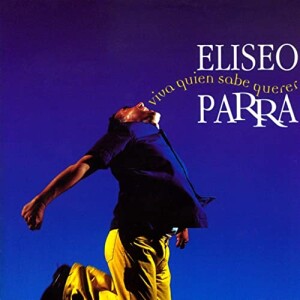 Eliseo Parra is dedicated to preserving and bringing forward the various strains that make up Iberian music, and he does it admirably in this intriguing and compelling CD. Spain hasn’t yet made much of a splash on the World Music scene, at least in the U.S., but Viva Quien Sabe Querer is just the type of recording that could change that situation.
Eliseo Parra is dedicated to preserving and bringing forward the various strains that make up Iberian music, and he does it admirably in this intriguing and compelling CD. Spain hasn’t yet made much of a splash on the World Music scene, at least in the U.S., but Viva Quien Sabe Querer is just the type of recording that could change that situation.
With a pleasant voice somewhere between a baritone and tenor, Parra sings effortlessly in all of the languages of Spain, on traditional or folk-based songs that range from the bouncy pop of the opener, “Fúlgida Luna” to the plaintive ballad “Noche Triste” to the ancient Andalusian folkdance “El Pino.” The songs seamlessly blend Old World polkas with New World habaneras, European folk tunes with “Moorish” rhythms.
Three of the tracks, including the opener, “El Brillante” and “Baile Sanabrés,” were recorded in a live setting at a Madrid cafe with the percussion group Tactequete. Two others were recorded live (no overdubs) in a studio, and the rest with typical studio techniques. Some of these latter, especially “Noche Triste,” tend to get a little weighed down with the production techniques, but overall the sound is fresh and appropriate to the songs.
Some of the songs including “El Brillante” and “El Pino” have overt Arabic influences, particularly in the use of upward bending of notes, and instrumentation that includes bouzouki and lots of percussion. “Baile Sanabrés” is a whirling, dervish-like concoction of rapid-fire drumming and Afro-Arabic percussion in a 6/8 beat and beautiful four-part harmonies. “El Pino” sounds like an Arabian corrido, if there were such a thing, in 5/8 time.
Among the most unusual are “Cigueña (The Stork),” which has chant-like vocals, the buzzing of what sounds like a dijeridoo, and lots of rattling percussion made to sound like the clattering of storks’ bills; and “Ruiloba,” which is based on an ancient dance from the Cantabria region. The simple but poetic lyrics about the wedding of a contessa and a captain are chanted over an Afro-Celtic beat and an intriguing blend of instruments, including harmonica, harmonium and hurdy-gurdy.
Don’t be put off by the bizarre cover photos of Parra, dressed in blue shirt and bright yellow pants, cavorting in a pasture and flying through the air: Viva Quien Sabe Querer is a very good CD, one that’s sure to pique your interest in the folk-based music of Spain.
(Boa, 2002)
